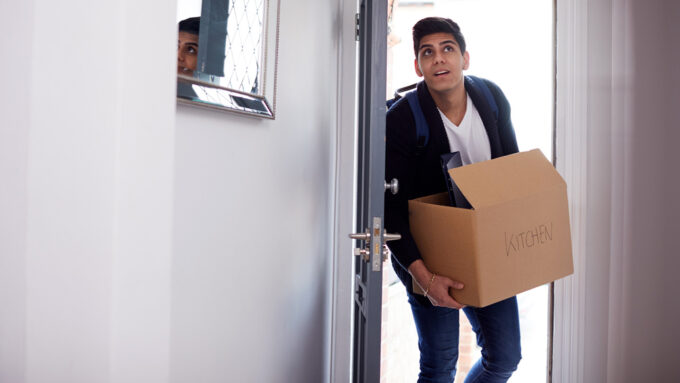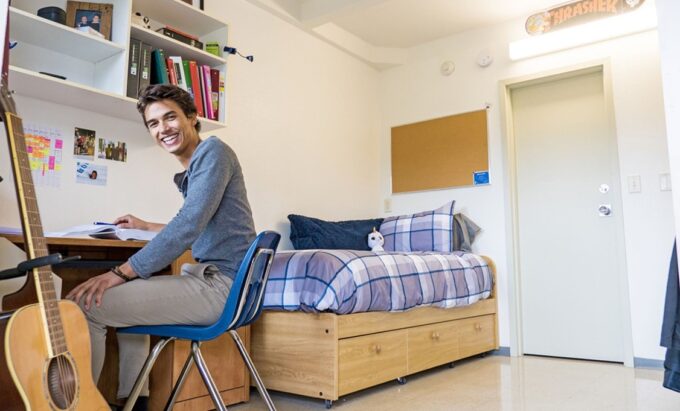Managing student rentals in Australia presents a unique opportunity for property investors looking to tap into a steady and reliable income stream. With the influx of both domestic and international students pursuing education in major Australian cities, the demand for student housing remains consistently high.
While there are significant financial rewards associated with managing student rentals, there are also risks that need to be carefully considered. Student accommodation Sydney is especially popular.
This article explores the financial benefits and risks involved in managing student rentals, providing insights for property investors aiming to make informed decisions in this niche market.
Financial Benefits of Managing Rentals

1. Consistent Demand for Accommodation
One of the primary financial benefits of investing in rentals is the consistent demand for accommodation. Australian cities such as Sydney, Melbourne, and Brisbane are home to globally recognized universities, attracting thousands of students every year.
The ongoing demand for housing creates a stable rental market, even during economic downturns. Unlike other types of rental properties, which may experience fluctuations based on market conditions, student accommodation tends to remain resilient. As long as educational institutions continue to operate, there will be a need for student housing, ensuring a relatively steady stream of rental income for property owners.
2. Higher Rental Yields
Student rentals often generate higher rental yields compared to traditional residential properties. This is because properties catering to students typically charge rent by the room, rather than for the entire property.
For example, a five-bedroom house near a university can be rented out to five individual students, each paying their own rent. The cumulative rent received is often higher than what could be charged if the entire property were rented to a single family.
3. Short-Term Lease Flexibility
Unlike standard residential leases that usually run for 12 months or more, student rentals often operate on shorter lease terms, typically aligning with the academic calendar. This flexibility allows landlords to adjust rental rates more frequently, optimizing their income based on market conditions.
4. Lower Vacancy Rates in University Proximity
Properties located near universities or in popular student areas tend to have lower vacancy rates. Students prioritize living close to their campus to minimize commuting time and transportation costs.
As a result, properties situated within walking distance or near convenient public transport routes are highly sought after. Lower vacancy rates mean consistent rental income, reducing the financial risk associated with long periods of vacancy.
5. Opportunities for Value-Added Services and Amenities
Student rentals offer opportunities to generate additional income through value-added services and amenities. Landlords can offer services such as high-speed internet, cleaning, and laundry as part of the rental package for an extra fee.
Furnished accommodations are particularly attractive to students who may not have the resources to purchase furniture. By providing furnished rooms, landlords can charge a premium, making the property more desirable while boosting profitability.
Tax Deductions and Incentives
Property investors managing student rentals may also benefit from tax deductions and incentives. Expenses related to property maintenance, repairs, insurance, and property management fees are often tax-deductible, reducing the overall tax burden. Additionally, investors may be eligible for depreciation claims on furniture, appliances, and other assets provided within the rental property.
Financial Risks of Managing Student Rentals

1. High Tenant Turnover
One of the major risks associated with rentals is the high turnover rate. Students typically lease properties for short periods, often for just one academic year or even a single semester.
As a result, landlords must continuously find new tenants, which can be both time-consuming and costly. High turnover increases the likelihood of vacant periods between tenancies, impacting rental income. Moreover, frequent tenant changes contribute to higher wear and tear on the property, leading to increased maintenance and repair costs.
2. Seasonal Demand Fluctuations
The demand for rentals can be highly seasonal, peaking at the start of the academic year and declining during summer vacation periods. Properties that rely solely on student tenants may face extended vacancies during off-peak times when students return home or go on holiday.
Landlords need to carefully plan for these seasonal fluctuations by either adjusting rental rates during low-demand periods or seeking alternative tenants, such as short-term renters or visiting academics. Failure to account for these fluctuations can lead to financial strain and reduced overall profitability.
3. Increased Maintenance and Management Costs
Student rentals tend to experience more wear and tear due to the lifestyle and behavior of younger tenants. Shared living arrangements, frequent social gatherings, and high foot traffic can lead to faster deterioration of the property. Landlords must budget for regular maintenance, which can be more frequent and costly compared to standard residential properties.
Additionally, managing rentals often requires more hands-on involvement or the hiring of a property manager with experience in this niche market. These added management costs can eat into profits, making it essential for landlords to factor them into their financial planning.
4. Legal and Regulatory Compliance
Managing student rentals in Australia involves navigating a complex landscape of legal and regulatory requirements. Landlords must comply with tenancy laws, health and safety standards, and building codes, which can vary by state and territory.
Non-compliance can result in fines, legal disputes, and potential damage to the property’s reputation. Staying informed about changes in legislation and ensuring that the property meets all regulatory requirements is crucial. This often requires working with legal advisors or experienced property managers, adding to the overall cost of managing the rental.
5. Market Saturation and Competition
In areas near major universities, the market for student accommodation can become oversaturated. An oversupply of rental properties can lead to increased competition, forcing landlords to lower rents or offer incentives to attract tenants.
To remain competitive, landlords may need to invest in property upgrades, offer flexible lease terms, or provide additional amenities, all of which can impact profitability. Conducting thorough market research and carefully selecting locations with strong demand but limited supply is essential to avoid the pitfalls of market saturation.

Last Words
Investing in student rentals in Australia offers both significant financial rewards and notable risks. Student accommodation can be a profitable and rewarding investment for property investors willing to put in the effort to manage these challenges.
By carefully considering the unique needs of student tenants, conducting thorough market research, and planning for the potential risks, property owners can capitalize on the growing demand for student housing while effectively managing the challenges that come with it.










